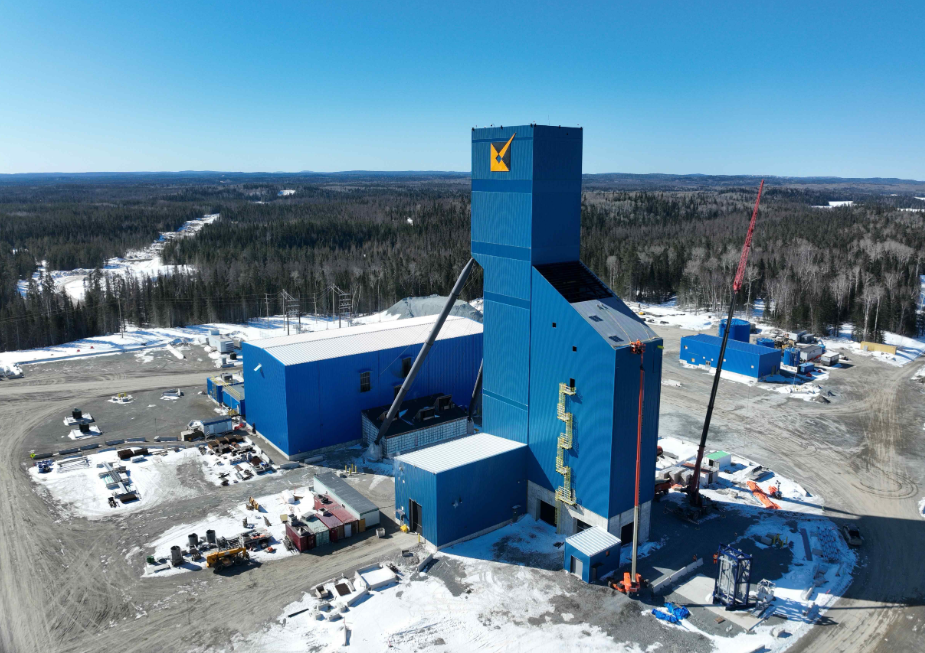Completion of the multi-million-dollar expansion at Alamos Gold’s Island Gold mine, outside Dubreuilville, is on track for the first half of 2026.
The gold potential at the prolific high-grade underground mine is key to the Toronto company’s three-year strategy to become a million-ounce-per-year producer, combining its mines in Northern Ontario and Mexico with another on the way in Manitoba.
In revealing its first-quarter earnings on April 30, the Toronto gold company posted a $59.8-million profit while producing 125,000 ounces from its mines in Northern Ontario and Mexico, a mark that's considered at the low end of Alamos’ gold targets for the year. Its Island Gold mine produced 59,200 ounces during that span.
The company posted revenues of $333 million, falling short of its expected results of $354.45 million. The market didn't react well, plunging Alamos’ stock price on the TSE from $39.30 to $33.00 on the morning of May 1. The stock has rebounded in the afternoon to more than $35.
“Our outlook has never been stronger and we have never been better positioned,” said company president-CEO John McCluskey in a May 1 webcall with mining analysts, who anticipates a better performance in the second quarter.
At Dubreuilville, Alamos is in the process of integrating Island Gold with the neighbouring Magino Mine, acquired from Argonaut Gold last year, and combining the two operations into one larger mining “district.”
In an update, Alamos said the new shaft-sinking at Island Gold had reached a a depth of 1,154 metres as of late April and remains on pace to reach the targeted depth of 1,373 metres by this year’s third quarter. A new paste plant is also under construction.
This is the third wave of underground expansion at Island Gold. The $796-million project is basically designed to mine more gold at lower cost.
One advantage in picking up Magino was its new processing plant. Beginning next week, ore mined at Island Gold will be trucked across the property to the more efficient Magino mill. A successful batch test of blending ore from the two mines was carried out in April and a haul road to the mill is substantially complete.
Some processing bottlenecks at the Magino mill had to be fixed this winter, said COO Luc Guimond, but they’ve “turned the corner” and are now seeing progress to support higher milling rates, which will allow them to grow production.
Guimond believes they will hit their stride in the second half of this year to 11,200 tonnes per day with eventual expansion of the mill on the horizon to reach a daily rate of 12,400 tonnes.
With three mine growth projects under construction, Alamos said it’s fully funded to finance all of them while keeping up the pace of exploration to stockpile its future resource base.
Back in February, Alamos announced it has 14 million ounces in gold reserves stockpiled at its mines in Northern Ontario and Mexico, bolstered by a 32 per cent bump at Island Gold.
The path to reach that million-ounce mark, the company said the addition of Magino will boost production to 600,000 ounces a year. The completion of the Island Gold expansion will put them at 700,000 ounces. Once construction of the Lynn Lake mine in northern Manitoba is finished in 2028, Alamos’ total ounces is expected to reach 900,000 ounces annually.
To put them over the top, Alamos management believes there more high-grade potential to be found at Island Gold.
On the exploration front, things are looking positive and encouraging as Alamos chases high-grade gold extensions extending westward from the Island Gold deposit. Follow-up drilling is underway.
Alamos said their outlook on what a significantly larger operation at Dubreuilville might look like will be revealed in an expansion scope study and development due by the end of the year.




